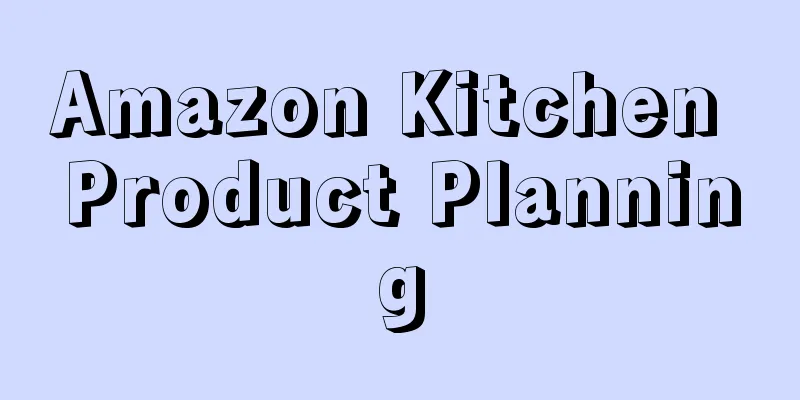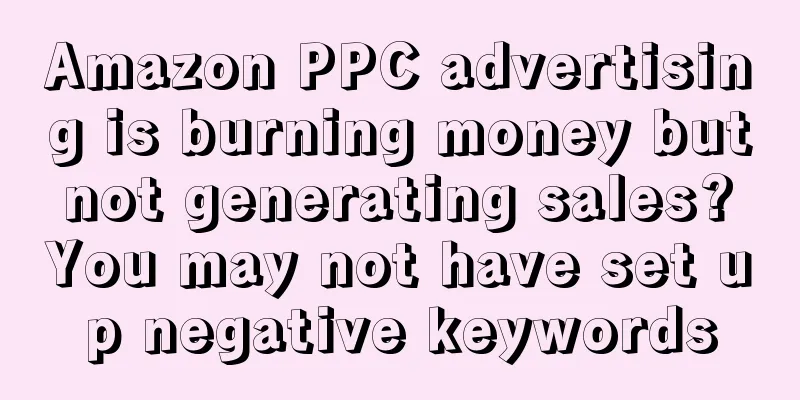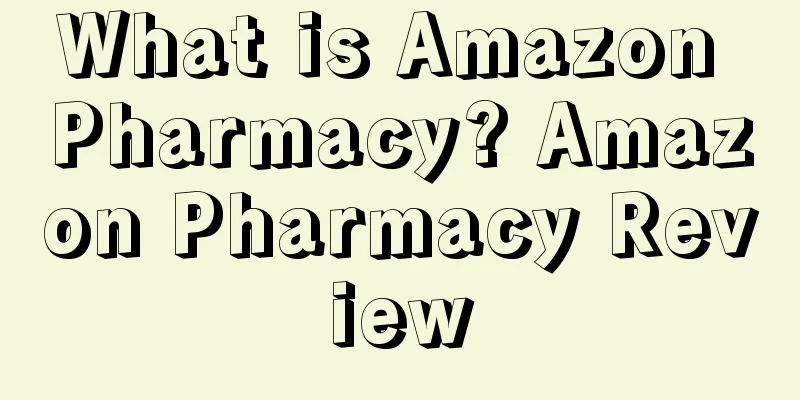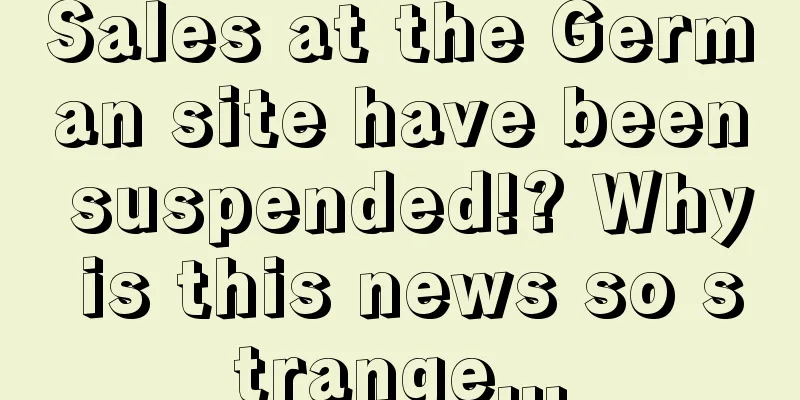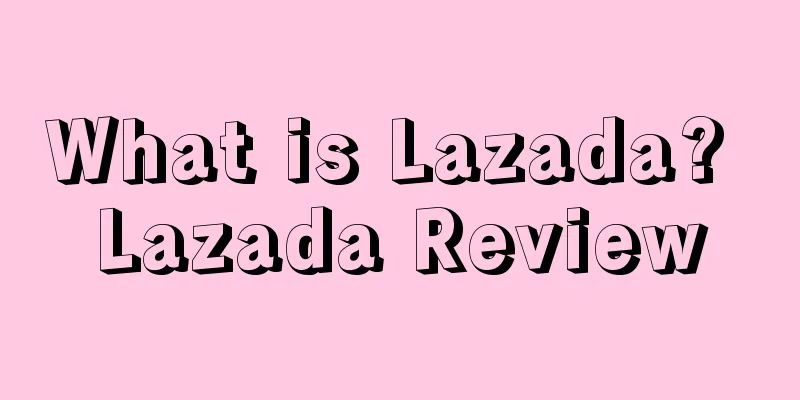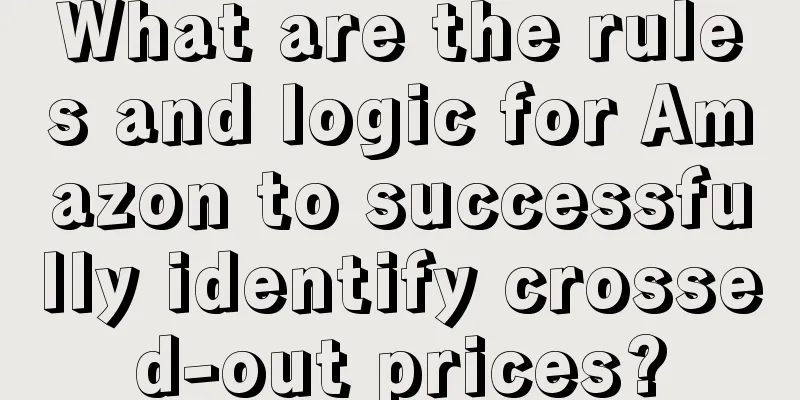|
The situation is this: there are currently two old products, both of which have over a thousand reviews and are in the same category. Product A has 2,000 reviews, a score of 4.0, and a customer unit price of 50; Product B has 1,500 reviews, a score of 4.3, and a customer unit price of 130.
Previously, the two products were mainly conversion-oriented, mainly SB and SBV ads, with good conversion results, but no natural traffic, and very dependent on ads, so the overall profit was average. In addition, the effect of SP was average, so the operation side strictly controlled acos, and directly abandoned it if the effect was not good at a certain time, so some precise words with orders were also abandoned.
The CPC of the category precise keywords is between 1.5-2.2. Because product B has good reviews and a high customer price, the ACOS of SP re-launching precise keywords is not high, and the position can also slowly climb;
However, product A also uses SP to accurately target keywords. The CPC may be slightly lower, but the conversion rate is average, with an average ACOS of about 80. The ACOS of the previous advertisement was controlled within 40. At this time, should we continue to place precise keywords to let the natural position climb or maintain the previous strategy? If we continue to place precise keywords, how should we consider whether the keywords are worth placing? Should we observe whether the natural position continues to grow after the placement? Or should we continue to place keywords when the overall ACOS is not high, and directly choose to give up keywords with high ACOS?
The ACOS of product B is acceptable at around 30, but for product A, the TACOS is relatively high during this period compared to before. Of course, product A can add 100 SKUs with a single customer price as profit, but in the short term, the ACOS will still be relatively high and will last for a while.
"Wonderful Reply"
Wild Passerby Agree from: a1543763235, 不懂老师123, ccdzd1, 123卷儿123, Dirtytc More » It won't last long. Why should advertising be based on SB and SBV? These two are not as effective as SP in improving keywords. With the rising cost of Amazon advertising, if sales are based on advertising, the link performance may get worse and worse in the future, until there is no order even if the advertising is turned off.
But product A also uses SP to accurately target keywords. CPC may be slightly lower, but the conversion rate is average, with an average ACOS of about 80. The ACOS of previous ads was controlled within 40. Should we continue to use accurate keywords to increase the natural position or maintain the previous strategy? It is recommended to be goal-oriented, not acos-oriented. If you only want acos, you might as well open all leak ads, which will look better. So it is recommended to continue to climb, but set several goals.
1. What position to climb to 2. If the expected pit production at this location reaches the target, continue; if it does not reach the target, make adjustments.
If you continue to place precise keywords, how should you consider whether the keywords are worth placing? Should you observe whether the natural position continues to grow after placing them, or should you continue to place them if the overall ACOS is not high, and directly give up on keywords with high ACOS. Don't give up directly. First, you must determine whether the keywords are the main keywords of your products/competitors. If the ACOS is not good, you can adjust the bid and move the placement back, but you must ensure a certain amount of clicks and see whether it is appropriate through conversion rate, not ACOS.
The ACOS of product B’s precise keywords is around 30, which is acceptable. But for product A, the TACOS during this period is quite high . I think it is unacceptable for the CPC acos of 30% with a customer unit price of 1.5-2 for 130. It is a bit too high.
It is still recommended to put more effort into advertising. It is not advisable to just abandon it if acos is not good. Anonymous user • Foshan • 2024-03-21 10:18 I understand. So how do you determine whether a keyword is the main keyword of a competitor? Should you look at the keywords that account for a larger share of traffic, or the keywords that naturally rank high?
Wild Passerby A • Guangzhou • 2024-03-22 10:15 @Anonymous user You can use the background software ABA or sif to find words with high traffic and high conversion rate. The focus must be on conversion rather than traffic. If your competitors perform well, some big words may also be in the top position. However, if your link is not competitive enough at present, it may not be a good option. It is recommended to start with more precise words first.
Anonymous user • Foshan • 2024-03-23 10:04 @野生路人甲: I have seen some of my own words with good conversions, but the SIF shows 0 conversions. I don’t know what to do. I can only say this: if the competitor’s words are naturally ranked high and he also has ads, then they are basically his words that are easier to convert.
He nryLee0129 • Shenzhen • 2024-03-28 09:45 @野生路人甲: I have a similar problem. My product is priced at 300-400 USD. Competitive products at the same price do not advertise, but mainly rely on brand words + model words to get orders. Competitive products at half the price get better orders than us under the main keywords, but SP ads often fail to reach the homepage, and the ACOS is also higher than 20%. Currently, the proportion of SBSD ads is higher than SP, and the advertising traffic accounts for about 50-60%. How should this situation be adjusted? Can you give me some direction?
Vae - advertising, refined operations. Agree with: Little White Flower of the Pearl River, Xiao Mang Mang, Come on, I Don't Understand Teacher 123, Rose02, Orange Cat Er Miao More » It is difficult for low-priced products to make a profit through advertising. The advertisement may not make any profit after a few clicks. To make a profit, it is more important to rely on natural traffic, or free traffic. When placing advertisements, you must have your own purpose, whether it is to convert profits or to expand traffic. After clarifying the purpose, you will have a clearer idea when building your own advertising framework. Products with high price per customer have high profits, so there is more room for operation.
I have discussed the following two questions with my friends before. The higher the conversion rate, the better. We should have no dispute about this. But do we have to pursue a higher conversion rate? The answer I give is to analyze specific issues and be goal-oriented.
The following is an example of a product I manage, with an average customer price of over $150. This is the advertising ratio of a product. The organic traffic ratio is 0.47%? ? Most people would think that this product will definitely lose money. But the actual situation is that my pricing for this product is 20-30% higher than that of competitors (the product differentiation is not very large), and then I rely on advertising to increase sales, and do not pursue organic rankings (focusing on relatively high-conversion advertising types such as SBV).
What about the results? The conversion rate of ads is definitely not good, but my profit is high, my profit value is high, and the ads are profitable (so I can expand the traffic infinitely). After deducting all costs (except labor), our product profit margin is also 20%, and the category ranks in the top 15 of the sub-category (our pricing strategy determines that our product will not rush to the top), and the profit every month is also good.
The main point of the above is that promotion needs to first have a good positioning and goal, and to implement specific methods around the goal. This should be a prerequisite. Back to the specific problem.
Product A, with a unit price of $50, is not too high, but it is not too low either. If you don’t focus on natural rankings for this kind of product, it will be very tiring to do it later, and the product will fluctuate greatly. Moreover, your profit value after advertising is not high. If your ranking and weight don’t improve, and more and more competitors enter the market, your advertising CPC will gradually increase. When your advertising profits are compressed step by step, your overall profits will be greatly compressed. In the long run, it is very difficult to play without natural rankings.
Regarding improving keyword rankings, the most commonly used method is to shua the keyword + advertise precisely (a combination of the two or one of them). You can decide how many orders to get based on the competition in the category (for example, if this word has 10 orders, it can be on the homepage. At this time, you can increase the ratio by at least 20-50% and maintain it for more than a week). The most important thing about this method is to have enough orders and sustainability. If you get more orders for this word, the ranking will naturally go up quickly.
You can also refer to this article by **Spirit for keywords on the homepage: You can also refer to this article by SellerSprite for keywords on the homepage (SPR is a relative concept and can be adjusted based on the results) :
https://www.sellersprite.com/v3/knowledge/feature/how-to-understand-spr
If you can't push big keywords, then from the perspective of traffic logic. Assuming that a big keyword can contribute 100 traffic a day, then logically you can do 5 keywords that can contribute 20 traffic a day, and the promotion difficulty is not that great. It should be noted that for most categories, if you want to become a top seller, you must use big keywords in the later stage, because small keywords may not be enough for you to become a top seller. At the same time, because you have profit requirements, the input-output of long-tail keywords is generally higher, and this kind of profit will be relatively controllable.
In addition, your rating is not as high as 4.0, but the number of ratings is OK. If the conversion rate is good, then the effect of the promotion is still good. If the effect is relatively poor, you can cooperate with deals and coupons to promote. The effect of keyword promotion is better under promotion conditions.
If you want to type in words, it is recommended to use SP+Exact. The effect will be better if you focus on the search position. For details about the focus, please refer to this post: https://www.wearesellers.com/question/89055 According to my test, SB has a low effect on ranking, and SBV will be even lower.
My personal opinion is that for product A, pushing keyword rankings is a must. Although "the effect of the previous SP placement was so-so, the operation side strictly controlled ACOs", this process may be painful, but if it fails to go up, the result may be painful. You have to push the keywords up.
Regarding product B, the average order value is $130, and the rating is 4.3, which you say is OK (so it should be good for competing products?). For this product, I suggest you follow your advertising goals. I personally tend to be profit-oriented, after all, if you sell one product, you may sell several products with lower average order value.
The current problem is that ACOS is around 30, but TACOS is relatively high. In other words, this product is still very dependent on advertising orders/advertising traffic. What I suggest here is that since the data can be used as a quantitative reference, you can measure the estimated cost of keyword promotion (need orders, quantify advertising orders and natural orders, and further quantify based on conversion rate; as well as the results after keyword ranking improvement), and the profit difference of promotion under the current operating model, and do a comparative analysis.
Is there a logical bug here? According to the above, wouldn’t it be better if all products promoted keyword rankings? But in reality, you also need to consider the cost of promotion. For example, in the case I just mentioned, you may have to lower the price or increase the discount to cooperate with the keyword ranking, which will cause profit loss.
Finally, I want to say two things.
1. Advertising is more of a traffic tool. Whether it can be converted depends on the listing itself.
2. From an operational perspective, it is not recommended to attach too much importance to ACOs, because advertising not only brings direct profits, but also helps to improve keyword rankings, improve link weight, and increase associated traffic.
Mad Maguire -Go for it 2022 Agree from: a1543763235, Crayon Shin-chan's children Hahaha, let me sort out what the OP said first. What you mean is that A and B didn’t do much keyword advertising before, and now they want to stabilize their natural position, right!
First of all, I think there is no conflict in using SP, SB, and SBV together. Do you not use SP at all when using SB and SBV? I usually use all ads, and give more budget to the one with better effect, and then reopen the groups with poor conversion after a while!
Then, I don’t know if you have many accurate words in your category, and if you have many words that can generate conversions! If you have many, you don’t need to focus on a few keywords. After knowing the average conversion rate of your category, if it is lower than the average conversion rate, you can pause for a while. Maybe during this period, competitors are also hammering on this keyword! If you start again after a while, you may gain a lot. When I run SP ads, I don’t care too much about acos, but focus on conversion rate. If the conversion rate is high, the weight of this word will obviously go up, and it will naturally stabilize!
I still think that there are so many types of ads and so many matching methods, you can try more. No one dares to say whose method is better, but you can summarize a set of the most suitable solutions for yourself in the process of trying! Finally, I wish the OP a big sale, and we can communicate more! Anonymous user • Foshan • 2024-03-23 16:59 Thank you very much. I have used SP before, but the effect was not as good as before, so gradually I stopped advertising it many times, so naturally the traffic gradually dropped.
Anonymous user Agree from: Th123456, HenryLee0129, Arashi, 懂老师123, Rorschachone More » The ratio of natural orders to advertising orders for a link that normally and stably generates orders is 7:3. Not having stable natural orders is very bad for the development of links. This is a serious deviation from the actual profit. When you calculate the cost, it is estimated that you will also lose money because advertising accounts for too large a proportion. You need to spend a lot of money on advertising to maintain your orders. And if you reduce the advertising budget all at once, your orders will also drop. Therefore, for this reason, the adjustment of advertising needs to be done slowly. Please refer to the following points:
1. If your organic link order is much lower than the advertising order, it means that the advertising wording is correct, but the link copy itself has a problem with its emphasis or embedded words (it may be that Amazon is crawling keywords in the wrong direction). Important copy, the first half of the title, the beginning of the five points, the core selling point and other traffic-generating words must be highlighted and consistent with the advertising wording.
2. Adjust the bids for precision advertising, find the different bids corresponding to different positions (top/middle/bottom) of each keyword, and the click volume and conversion rate of products in different positions. Record these data and make a data evaluation to determine how much budget is needed for each ad word every day, how many orders can be placed stably, and how much comprehensive profit is maximized (note that this is not the profit margin, but the overall profit).
Only when the ad position is gradually lowered (or the budget for a single word is reduced), so that the ad position gradually disappears from the homepage, the natural position will slowly move up. Why? You can learn about the previous keyword homepage technology: through various buyer accounts to find your product under the same keyword, your keyword natural position quickly reaches the first page. So when your ad position is too forward, the buyer behind it belongs to the natural position of the same product, and is not willing to click again. This makes it difficult for your natural position to move up.
3. Classify keywords and treat them differently. Because under different keywords, the first page competitors may be strong or weak, or all the first page product links may be very strong, and you can't beat them no matter how you optimize the page. At this time, you can only change direction and find the "soft persimmon" on the first page of keywords to pick and deal with it, and use third-party software such as SellerSprite to reverse check the keywords of competitors.
Since your link page is optimized and better than the competitor, your overall conversion rate should be higher than the competitor. So, boldly attack other people's keywords and traffic keywords, and you may be able to take over their jobs. In this way, after accumulating and killing several competitors, the corresponding second-level keywords or long-tail keywords will naturally rise in position. Combined with the adjustment of keyword bidding in point 2, gradually let the product appear on the homepage of the second-level keywords or long-tail keywords, and give up the position.
4. Conduct activities: For on-site and off-site activities, it is better to conduct flash sales after confirming the position of your advertising keywords, because in brand analysis, each keyword has 3 TOP links, and the shared click-through rate and shared conversion rate are the best rankings. So at this point, our goal is that the product can enter the TOP3 position of a secondary keyword (the traffic is one level lower than the big word), because flash sales can definitely increase the conversion rate.
Why do you need to position the keywords in the ads appropriately? Because if you want your product to have a good conversion rate, you also need people to see it at the right time and in the right place. Otherwise, even if you sell it for $1, no one will see it and there will still be no conversion. Once you find a keyword that can hit the TOP3 position and enter the brand analysis list, you can follow this method to find other keywords and gradually break through the natural position. Eventually, you will reach a higher natural position for the keywords, and achieve a higher product traffic and order volume than the advertising traffic and order volume.
Note: You need to analyze your products in detail to see if the order volume will plummet when you remove the ads. "Traffic plummets when you remove the ads" means that you have little natural traffic and associated traffic or the product market is small. You should first analyze the source of the main traffic of your products, then track the position of keywords, and then conduct targeted advertising to give the most budget to the best performing ASIN under the keyword.
It should be so - God helps those who help themselves Agree from: Little White Flower of Pearl River, Don't Understand Teacher 123, Rorschachone, Sueeeee SP advertising is necessary to promote the natural search ranking of link keywords, because SB/SBV is more inclined to marketing exposure promotion.
Your current problem is that the ACOS of Product A’s SP ads is too high, resulting in a high cost for using Product A’s SP ads to drive organic ranking growth.
The ACOS of SP ads is mainly related to the ad conversion rate, CPC, and average order value, among which the average order value is the fundamental influence, the conversion rate is the core influence, and CPC is the supporting influence.
Suggestions for SP advertising ACOS and natural ranking promotion:
About advertising conversion rate.
According to what you said, product A has good conversion performance in SB and SBV, and the main exposure and click positions of SB and SBV are on the keyword search page. Based on this result, have you tried to focus the exposure and click of SP ad placement on the top search and other search positions? In other words, if the same keyword performs well in SB/SBV, can the conversion performance of the ad placed on the SP placement search page also maintain a relatively good conversion?
As for relevance, we will not discuss it in detail here, because the problem of keyword matching degree should be relatively easy to find. In addition, you need to confirm whether the content of the search terms is highly matched/completely consistent with the keywords to be promoted. The delivery words and sear terms are two different concepts. The performance of the latter is what really affects the growth of the natural ranking of your link search terms.
About CPC reduction plan.
In most categories of Amazon, there are only links during the promotion period, and the CPC will be high and uncontrollable. Once a link is stable, the CPC of the ad can be gradually reduced until it reaches a balance point - CPC is minimized when the exposure-click conversion value is met. So this is why big selling companies, companies with large enough data volumes, basically separate operations and advertising into two departments, in order to maximize the value of advertising input-output.
Before you lower your CPC, first clarify your current ad clicks, including which ad types, positions, matching methods, bidding methods, keywords, etc.
Because you need to know:
1. For the same top search position, the same keyword A, and the same SP advertising, different matching methods will result in different CPC costs for running A in search terms. In most cases, the CPC cost of exact match is the highest, followed by phrase, and then broad match.
2. Under the same matching method, the same ad space, the same SP product ad, different ad types require different CPC costs. Category ads, ASIN ads, and keyword ads all require different CPCs to reach the top, and vice versa, the search terms are also different. But have you ever thought about how much the corresponding buyer search term deviation will be if your ASIN ad positions your same competitor at the top search position?
Other examples with even greater differences are not listed one by one.
So in order to reduce CPC, you should first sort out your advertising traffic structure and see which traffic types have room for optimization? How much room for optimization is there under the same traffic type? Because when you reduce CPC, the premise is that it cannot affect your ad position, relevance, and the number and proportion of ad display types too much, otherwise your ad conversion rate will also fluctuate.
At the same time, when adjusting the test, it is necessary to make judgments based on market competition, competitor behavior, link conversion conditions, etc., to avoid simply thinking from the advertising data results, which can easily lead to data traps.
As for the average order value, the original poster has already mentioned that the product will increase the profit item, and you can consider whether the profit item is suitable to be added through a variant relationship, so that the overall profit of the parent body can be suppressed and the traffic utilization rate can be improved.
When advertising investment drives the growth of single volume, if advertising dependence remains high for a long time, it is either due to problems with advertising layout or external environment. Because the growth factor of the link's natural keyword ranking, in addition to the layout adjustment of SP advertising, the order conversion rate of the link itself in the business report, the degree of competition in the search weight of the market segment, the link product life cycle, the evolution of market product trends and other factors are also relatively important.
A relatively reasonable and balanced advertising structure can be used as a reference (different focuses should be placed according to different stages)
Search traffic:
Precise matching - core words (main promoted words), the purpose is to lock in core precise traffic.
Broad, phrase matching - core words (mainly recommended words), further capture the marginal traffic of core words. Whether to place ads on other non-core words (long-tail words, related words, etc.) depends on the proportion of advertising costs and the characteristics of the category.
Note: The above ad positions are mainly located on the search page.
Related traffic:
ASIN advertising - strong competitors (where you have an advantage) directly run advertising spots on product details pages.
ASIN advertising - weak competitors (those where you don’t have an advantage) go directly to the top search position. Since you don’t have an advantage, it’s best to complete the competition comparison on the search page to avoid wasting invalid clicks.
Category advertising - refine the brand, price, and rating. This type of advertising has a relatively low cost and focuses on attracting traffic with conversion as a secondary purpose.
SD——strong competitor, CPC bidding, and rush for conversion.
SD——weak competitor, VCPM, grabbing exposure.
Marketing exposure:
SB——Brand
SBV – Increase the click-through rate and interaction rate of listings on search pages
SDV - Enhanced detail page ad placement
Home page traffic, off-site traffic:
SD — contextual matching (no refinement)
SDV - No detailed delivery
Do the included analysis:
Automatic ads - close and broad: matching the listing content Automatic ads - same style and complementary: matching product type matching
Based on the above matching results, placement analyzes the performance differences of the product in different locations at this stage.
Amazon also has an official article discussing the topic of keyword ranking.
Jack's cross-border journey - 10 years of cross-border experience, proficient in cross-border operations and growth Agree with: Who are you to me, imDylancc There are two ways to answer the original poster's question: 1. Should we do SP advertising? 2. If we do SP, how should we do it?
Question 1: Should I be an SP?
From a cognitive perspective:
The ultimate goal of our advertising is to not advertise!!! It is to gain exposure, generate clicks, add-to-cart, and orders through advertising. With good data performance, the search ranking is improved. In the advertising system, SP advertising has the greatest impact on search rankings and is the most direct and fastest form of advertising. Therefore, if you want to increase the proportion of natural orders, you must promote SP advertising. From a strategic point of view, SP advertising is a high ground that must be taken.
2. How to run SP ranking ads
Once you have agreed to implement the SP strategy, then how to do it is a question of tactics. There are many ways to implement SP, such as aggressive, steady, focusing on big keywords, and focusing on the long tail of rural areas to surround the city. To implement SP advertising, you need to analyze it from the perspectives of product type, advertising budget, break-even acos, etc., and choose the strategy that suits you.
Also, please remember that SP advertising is a tough battle, especially when you are targeting core keywords. There are countless strong enemies blocking the way ahead. You must have the courage to make strategic losses and the awareness of long-term investment to succeed.
Anonymous user
Not using natural placement means that the link cannot be stabilized. Once a product with an advantage over yours appears and snatches your SB advertising position, it will be easy to lose the market.
Two ways to play:
1. Target the natural positions of big keywords and ignore the ranking of acos. This is suitable for the standard and semi-standard market where the capacity is not so red ocean.
2. Start with related small words first, then gradually expand to medium and large words. This method is slower, but it can effectively control the budget and promote the product's natural position.
In addition, you don’t have to hit the precise word right away, you can try phrases and broad. When hitting the precise word, you can combine the low-bid SP with the high-bid SB.
For products in the same category, it stands to reason that the conversion rate of products with low average order value is higher than that of products with high average order value. If the conversion rate is not satisfactory at this time, you should consider the following aspects:
1. In addition to reviews, does the listing have any other fatal flaws? 2. In terms of word selection, search terms are also divided into different groups of people. For example, some consumers who pursue high quality are unlikely to search for cheap xxx. You can specifically study the population attributes of the keywords you place.
You can also search on the front end to see what the products side by side look like, click on the page to see if there are any competing products with obvious advantages that are competing for traffic with the products in your listing.
Amazon Operations - Old Man First of all, will the advertising method mentioned by the questioner that does not focus on natural positions last long? This is definitely not long-term. The purpose of advertising is to increase sales and natural positions; if your advertising positions are sold, it will also promote the improvement of your natural positions, which will have long-term benefits.
Since it is an old product, it depends on the company's requirements. If the ACoS of the newly launched words is relatively high in the early stage of product A, you need to look at it over a longer period of time. You didn't say it in detail, such as a week or a month of data, and then decide whether to give up. If the ACoS of the data for a month is relatively high, then you can consider slowly lowering the bid; the words don't need to be turned off all at once, which is also part of the traffic.
Since product A is profitable, you can continue to place other ads with relatively low ACoS within the acceptable threshold. If there are orders, you can continue to increase the bid and budget, see the effect of the first place on the homepage, and then observe whether your natural position has improved. If there is anything wrong, I hope you can correct me.
Mochi Lemon - Amazon Bara Bara Organic orders need to account for 60% to be in a relatively good profit state; the suggestion is to continue to place precise words to let the natural position climb, and always turn on precise words. You only give so much budget, and if the budget is slow and ACOS is not good, just leave it alone. Generally, run it for 3 to 4 weeks, and ACOS will get slightly better. Or lower the CPC, or divide the budget into different CPCs and different advertising campaigns for testing, or test those long-tail words first.
Video ads and display ads can definitely bring better conversions, but they don’t help much with improving natural positions. It’s better to allocate the advertising budget properly and run more SP ads.
If your big keywords don't convert well, you can keep it even if the budget is 1-5 dollars, and then start to target other keywords. Otherwise, when there are more and more competitors, they will also start other ads, and your orders will be diluted quickly.
Moreover, the CPC will decrease as you run slowly. If you think it is too high and keep it that way, it will only get higher and higher.
Anonymous user Most of the high average order value is pulled by advertising. As long as there is profit, it is easy to deal with. For low average order value, it is still necessary to combine it with natural orders. For the advertisement of product A, the ACOS of precise big words will generally be higher. It mainly depends on the natural position and where the click is. Generally, it takes a period of observation. It takes three to seven days to force the pull. If the natural position does not change, consider cutting a little budget to hit the long tail. If you cut, don't cut too much at the beginning. Cutting too much may cause the natural position to drop.
Anonymous user For old products, advertising is only an auxiliary means, not a panacea for reviving them. If there is a lot of inventory, it is recommended not to pay too much attention to the level of ACOs in the early stage, but to focus on increasing exposure and spending money first; then adjust CPC and position ratio according to actual conditions.
|

